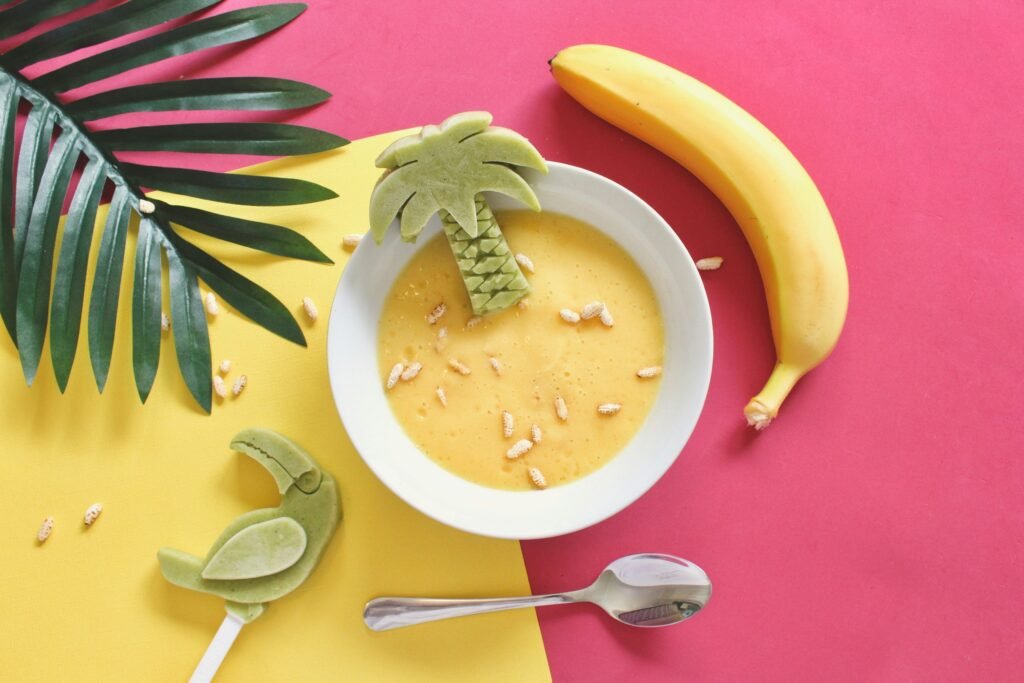Greeting! Thank you for joining me today as we embark on the wonderful journey of introducing your baby to solid foods through baby-led weaning. I’m Priya, a board-certified gynecologist and a proud mother of a little one.
With me is my husband, Anil, a first-time dad. Together, we’re here to share our personal experiences and insights into baby nutrition. Welcome to our channel!
Understanding Baby-Led Weaning
Baby-led weaning is a method of introducing solid foods that emphasizes letting babies set their own pace as they explore new tastes, textures, colors, and smells. Unlike traditional methods that start babies on purees or rice cereals, this approach encourages babies to learn through exploration.
We found this approach to be liberating. Our little one’s curiosity and excitement as she explored different foods were truly heartwarming. One of our favorite memories is watching her grasp a piece of steamed carrot and examine it closely before taking a tentative bite. It was a beautiful moment that highlighted her natural curiosity and independence.

Baby-Led Weaning vs. BLISS
You might also come across the term BLISS (Baby-Led Introduction to Solids), which is quite similar to baby-led weaning but comes with more structured instructions for parents. For our journey, we used these terms interchangeably, focusing on making our baby’s introduction to solids safe and enjoyable.
Traditional vs. Baby-Led Weaning
In the US, most families start with purees, baby foods, or rice cereals. While these options are convenient and fortified with essential nutrients, baby-led weaning offers a different approach. For us, the focus was less on getting our baby to eat specific foods and more on helping her develop a healthy relationship with food.
One evening, we decided to share our homemade vegetable soup with our little one. We ensured the vegetables were cut into safe sizes for her to pick up. Watching her explore the different vegetables, from soft zucchini to crunchy carrots, was a delightful experience for us as parents.
Our Baby-Led Weaning Journey
We chose baby-led weaning because it aligned with our lifestyle. Cooking dinner at home most nights allowed us to offer our baby safely prepared versions of our meals. It was a simple and enjoyable approach that we fondly referred to as the “effortless mom introduction to solids.”
Research also suggests that mothers who opt for baby-led weaning may experience lower levels of anxiety and other positive effects. If you don’t want to trust the research, just take my word as a guarantee, ha ha… For us, this approach felt natural and intuitive, reducing mealtime stress and allowing us to enjoy family meals together.
Safety First
Safety was always our top priority. Proper coaching and precautions helped us mitigate potential risks, such as choking or nutritional deficiencies. We always made sure our baby was ready for solids and never left her unattended during meals. Creating a distraction-free environment and offering age-appropriate foods were also crucial for a safe and enjoyable experience.

Getting Started
If your baby shows interest in table foods, has good head control, and is between four and seven months old, they’re likely ready to start exploring solids. Start with foods like diluted rice cereal or thin gravy to help them practice swallowing.
We remember the first time we offered our baby a piece of ripe banana. Her eyes lit up with curiosity as she held the banana and explored its texture. Although she didn’t eat much at first, the joy and excitement in her eyes were priceless.
Allergen Introduction
Contrary to popular belief, there’s no medical evidence suggesting that avoiding allergens during the early months benefits babies. In fact, exposing babies to potential allergens may reduce their risk of developing allergies later on. Introduce new foods gradually, waiting two to three days between each new food to monitor for any adverse reactions.
Every baby is unique, so it’s essential to find an approach that works best for your family. As always, the information we share is based on our experiences, and any specific medical concerns should be discussed with your healthcare provider. Until next time, take care and happy feeding!
